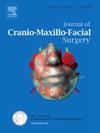3D analysis of long-term airway evolution following orthognathic approach of bimaxillary setback surgery without segmental osteotomy
IF 2.1
2区 医学
Q2 DENTISTRY, ORAL SURGERY & MEDICINE
引用次数: 0
Abstract
Long-term evolution of airway space following bimaxillary setback surgery has been seldom reported. 31 patients with bimaxillary protrusion were included in this study. Bimaxillary setback surgery without segmental osteotomy were performed to alleviate their facial deformity. The pharyngeal airway volume and most constricted airway cross-sectional areas before surgery (T0), one week (T1), and one year (T2) after surgery were measured by 3D image analysis depending on CT data. To exclude the impact of post operational swelling on the airway analysis, the airway changes of another cohort of 10 orthognathic patients without sagittal maxilla or mandible movements were also measured as a control. Body mass index (BMI) was noted and analyzed as well to rule out its interference. Results showed that, in bimaxillary setback surgery patients, no post operational upper pharyngeal airway sleep disorders (UASD) occurred. The mean ± SD of pharyngeal airway volume (PAV) and the minimum cross-sectional area (Min-CSA) at T0 were 14921.3 ± 3910.1 mm3 and 147.9 ± 75.8 mm2, reduced to 11834.1 ± 3916.3 mm3(79.3%, P < 0.001) and 111.6 ± 60.6 mm2(75.4%, P < 0.001 at T1, and recovered to 14686.8 ± 3917.1 mm3(97.1%, P < 0.001) and 132.7 ± 62.8 mm2 (89.6%, P < 0.001) at T2. In control group patients, the mean ± SD of PAV were 16540 ± 5518 mm3 at T0 vs 14248 ± 4340 mm3 at T1 (P = 0.051) and Min-CSA were 156 ± 61 mm2(T0) vs159 ± 61 mm2 at T1 (P = 0.849). Besides, At T0 and T2, the mean ± SD of the BMI was 20.19 ± 1.80 and 20.04 ± 2.53 respectively (P = 0.772). This study suggests that Orthognathic bimaxillary setback reduce the pharyngeal airway space. However, the reduction will largely alleviate in long-term. Aesthetic oriented bimaxillary setback approach is relatively safe when the setback distance is controlled appropriately.
采用正颌法进行双颌后凸手术后长期气道演变的三维分析,无节段截骨术。
双颌后凸手术后气道空间的长期演变很少见报道。本研究共纳入了31例双颌前突患者。为了缓解面部畸形,他们接受了双颌后移手术,但没有进行分段截骨。手术前(T0)、术后一周(T1)和术后一年(T2),根据 CT 数据通过三维图像分析测量咽气道容积和最收缩气道横截面积。为排除手术后肿胀对气道分析的影响,还测量了另一组 10 名没有上颌骨或下颌骨矢状移动的正颌患者的气道变化作为对照。同时还对体重指数(BMI)进行了记录和分析,以排除其干扰。结果显示,双颌后移手术患者术后未出现上咽气道睡眠障碍(UASD)。T0时,咽气道容积(PAV)和最小横截面积(Min-CSA)的平均值(±SD)分别为14921.3 ± 3910.1 mm3和147.9 ± 75.8 mm2,而T0时则降至11834.1 ± 3916.3 mm3和147.9 ± 75.8 mm2。T0 时的最小横截面积(Min-CSA)分别为 14921.3 ± 3910.1 mm3 和 147.9 ± 75.8 mm2,而 T1 时分别为 11834.1 ± 3916.3 mm3(79.3%,P 2(75.4%,P 3(97.1%,P 2(89.6%,P 3))和 14248 ± 4340 mm3(P = 0.051);T0 时的最小横截面积(Min-CSA)分别为 156 ± 61 mm2(T0)和 159 ± 61 mm2(T1)(P = 0.849)。此外,在 T0 和 T2,BMI 的平均值(± SD)分别为 20.19 ± 1.80 和 20.04 ± 2.53(P = 0.772)。这项研究表明,正颌双颌后缩减少了咽部气道空间。不过,这种减少在长期内会得到很大程度的缓解。以美学为导向的双颌后缩方法在适当控制后缩距离的情况下是相对安全的。
本文章由计算机程序翻译,如有差异,请以英文原文为准。
求助全文
约1分钟内获得全文
求助全文
来源期刊
CiteScore
5.20
自引率
22.60%
发文量
117
审稿时长
70 days
期刊介绍:
The Journal of Cranio-Maxillofacial Surgery publishes articles covering all aspects of surgery of the head, face and jaw. Specific topics covered recently have included:
• Distraction osteogenesis
• Synthetic bone substitutes
• Fibroblast growth factors
• Fetal wound healing
• Skull base surgery
• Computer-assisted surgery
• Vascularized bone grafts

 求助内容:
求助内容: 应助结果提醒方式:
应助结果提醒方式:


